FINE-LINER Pen SHOOTOUT – A comparison of Fine-liner Pens on the market
Who Is This Guy??
I guess I’ll have to introduce myself first. My name is Jerry Teo. I’m a freelance technical/scientific illustrator based out of Singapore and a friend of Parkablogs. You can find more of what I do here (www.teo-ology.com). I run a weekly webcomic Rex Regrets that might be more familiar to other crowds. I mostly sketch with fine-liner pens without pencils, coz I’m lazy. So Parka asked me to do a review on the available brands out there today. Now that we’ve established that….
What’s a Fine-liner Pen?
Fine-liners are felt or hard plastic fiber tipped pens that are usually disposable, comes in a variety of pen widths and are generally used for drawing and sketching. They are also known as technical pens. It is a relatively modern development and an offshoot of the more “traditional” Isograph technical pens. Before fine-liner pens came along, there were very few options for fixed width pens that go smaller than 0.5mm. Today, pretty much every major (and smaller) stationery manufacturer with a respectable pen lineup have their own range of Fine-liner pens. This review aims to shed some insight on some of the available types out there.
Most often, fine-liner pens come to mind when an artist wants to sketch with inks. Of course as one draws with ink more often, tastes will become more refined and specialized fountain pens might be in order. However fine-liners from various manufacturers sometimes also feature non-black inks so there’s a certain range of possibilities that are instantly available with these products.
What else can they be used for?
Aside from drawing and sketching, Fine-liners are a good alternative to the more expensive technical pens for detailed draft work. However the pigment ink may not be as rich as technical isograph pen inks. Fine-liners can also be used for writing and are quite nice to write with. But they’re not as economical when used as a writing pen – there are obviously much more affordable ball-point and gel type pens on the market for that purpose. Fine-liners also don’t require much pressure on paper, so they’re not recommended over ball-points if you need to write on those pesky carbon copy sheets.
Strengths & Weaknesses.
These pens are relatively affordable, disposable, lightweight and fairly maintenance-free. Initial costs for a set of Fine-liner pens beats the more expensive Isograph/Rapidograph technical pen sets and makes it very attractive to switch. Fine-liners also don’t have the maintenance issues of Isograph pens, they don’t clog and you can toss it out if they dry up. Brand new pens see little ink flow problems and they are a pleasure to use on smoother paper. Most of the time the pigment inks are waterproof (up to a certain point) and will work well with highlighters, watercolor or markers. The inks are developed for fast drying to prevent accidental smudging.
On the downside, fine-liners typically have a fiber, felt or plastic tip and these tips may not be very robust and will wear out over time. If used on a paper surface with coarser grain, smaller diameter tips may wear out before the ink well gets used up. Fine-liners also need to be capped tight to prevent drying out, something which can deplete one’s pens very quickly if the user isn’t mindful. Several brands claim to have a long “cap-off” period where you can work with all the pens uncapped for 12 hours and up, but I attribute them more to marketing gimmick. Some brands require the pens be laid flat in order to prevent ink flow problems.
The disposable nature also plays against these types of pens. In the long run, the total cost of buying and discarding these pens may end up being higher than Isograph technical pens or a drawing fountain pen. Heavy users of fine-liners, like me, often end up having piles of plastic tubes lying around after the ink has run out. Being mindful and practicing good recycling habits should alleviate some issues that these pens bring to the environment.
Pens Reviewed
- Rotring Tikky
- Shachihata Artline Drawing System
- Sakura Pigma Micron
- Kuretake ZIG Millennium
- Kuretake ZIG Mangaka
- Faber Castell ECCO Pigment
- Shinhan Touch Liner
- Pilot DR Drawing Pen
- Uchida Marvy For Drawing
- Staedler Pigment Liner
- Mitsubishi Uni PIN
- Copic Multiliner
Method of Review
The test is not completely scientific, although I try to achieve some consistency in the tests I put the pens through. Most of the tests were done on A4 100gsm copier paper (from PaperONE). This replicates the most common conditions which I work in – cheap paper so I can sketch loads. The pens were also briefly tested on Strathmore Bristol paper (smooth 270gsm), Fabriano Tecnico (240 gsm) and Clairfontaine fine grain Drawing Paper (224 gsm).
The pens went through hatching, cross hatching, stippling, curly lines (there’s a lot of names to it) and be layered over thickly to test their effect on A4 copier paper. Its not a stress test but it allowed me to understand if there are any limits to how much I can do on a small surface before moving on to a full sketch.
Duration of Review
The review is only focused on the short term use of the pens, ie, what you get out of it from using them immediately after purchase. All the pens reviewed are brand new off the shelf. I'm not promising anything right now, but perhaps I’ll update the review with how the ink stands up to exposure to elements (mainly Sun) or just from being kept in shelves. 6 of 12 pen types reviewed are new to me and I don’t have any long term data on those for now.
Bias Acknowledged
Before moving on to each brand, I must confess I’ve used many of these brands over the years and have settled (quite happily) on the Mitsubishi Uni PIN after my own habits. I’ve also had very good results with Staedler Pigment Liner as well as Sakura Microns. With that, let’s move on to the review.
Disclaimer
These opinions are mine and they were formed over years of working with these pens doing the kind of work I do. They are based upon my personal experiences, requirements and expectations. If you work a lot with these 12 brands on review and have been looking for a replacement or back up in case stocks dry out, I would suggest testing them out on your own and not simply rely on my views. If you’re new to using fine-liners, I hope this article did help inform you of the options you have out there.
Symbols used in on the reviews
“+” is a positive point that I feel applies to most users
“-“ is a negative point
“+/-“ is a nit-pick that may or may not affect user experience depending on individual preferences
THE PENS
Rotring has been a mainstay in technical pens and you can find the isograph review on this site here. The Rotring Tikky is however something different. The Tikky works best on smooth paper designated for ink work. It excels on generic copier paper. The inks run very smoothly although it may take a moment longer to dry compared to the less generous flowing brands. So keep your hands off the paper or be prepared to deal with smudges.
+ Robust build, feels solid in the hand
+ Ink is a nice, rich shade of black
+ Big transparent window to indicate remaining ink
+ Tapered front end before metal nib extension
+ Does not smudge with Copic Markers when dry
+/- Fast and smooth ink flow but ink bleeds on certain types of paper
- Fast ink flow leads to thicker resulting line compared to other brands of the same diameter size
- Ink takes a tad longer to dry
- Ink bleeds through 100gs/m paper if layered on aggressively
- Costs up to twice more than most Fine-liner pen brands
Shachihata Artline Drawing System
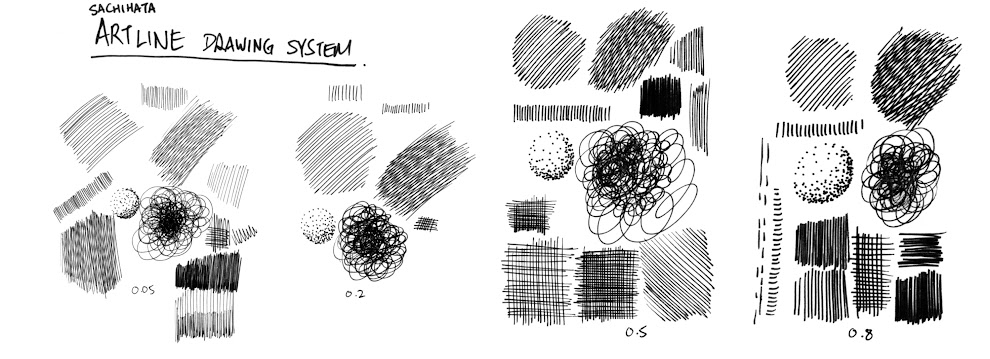
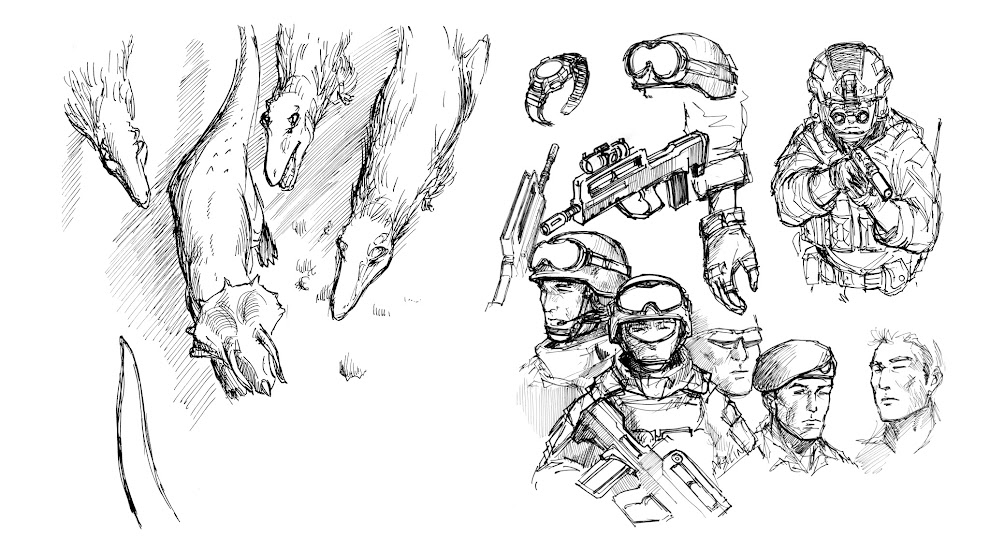
The Artline series of pens are very nondescript in the looks department. Only difference is in the grip, where it has concentric grooves that run the diameter of the pen chassis. The Artline series fall into the most popular price range so it is very competitive in terms of price and quality. It performs well across all papers being used in this review and….there’s really nothing to complain about this pen!
+ Feels robust in the hand
+ Ink glides nicely on all sorts of paper
+ Nice, rich shade of black in bigger diameters
+/- Concentric grooves around pen chassis helps with grip, but may not be preferred by all
- Ink doesn’t feel solid black enough on smallest diameter
- Pen clip can slide off cap easily
This was a favourite of mine for many years. At one point I had some difficulty obtaining them and went on to use other brands. They are still a really good product in my opinion and plenty of fellow illustrators still swear by it if they have to go back to a fine-liner.
+ Smooth ink
+ Black looks very rich even on smaller diameters
+ Dries fast
- Fiber inkwell wobbles in chassis
- Pen clip can slide off the pen cap
- Nib width indication on pen cap scrapes off easily preventing easy identification of nib size
Kuretake ZIG Millennium & ZIG Mangaka

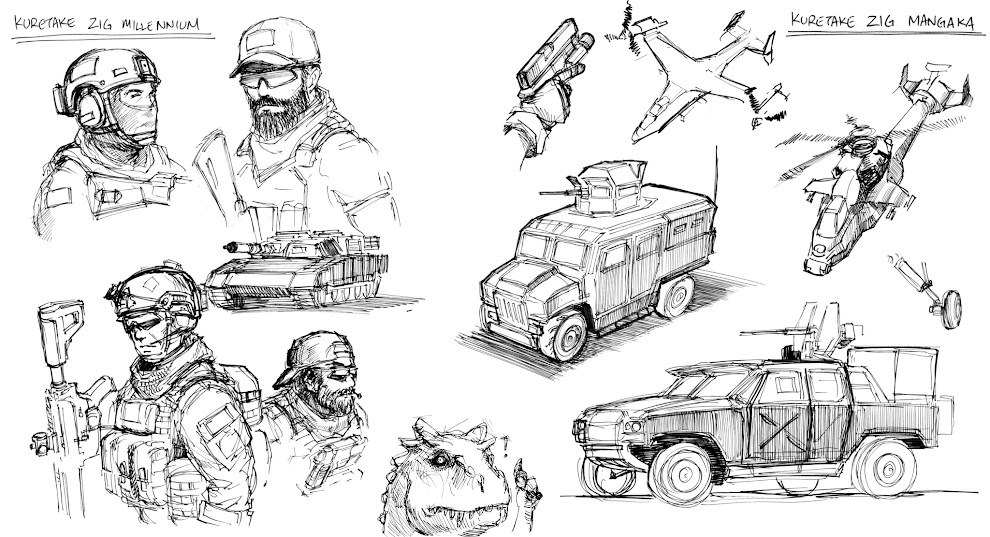
I’ve used the Zig Millennium previously and I liked how it was smooth and easy on the paper surfaces I use on a typical day. More recently Kuretake offered the ZIG Mangaka version. Zig Millenium supposedly uses a photo-safe, archival grade ink that can be used to mark photographs, while Zig Mangaka is lightfast (won’t fade easily with exposure to light) and smudge proof when used with Alcohol based markers and watercolor.
+ Nice, clean black ink when dry
+ Feels robust, good volume to grip on because of chassis design
+/- Smooth when new, can become sluggish as ink well finishes up
+/- Pen chassis is thicker around the grip area. Could be a pro or con depending on user preference
- Nib can catch paper fibres if dragged repeatedly over area with wet ink
The grey Faber Castell stands out for its distinct grip area compared to the rest of the fine-liner pens. The grip is narrower than the rest of the chassis and is textured. This makes for very comfortable holding but once again this is subject to preference of the user. The ink is smooth flowing, rich black even at smaller diameters.
+Smooth flowing
+ Works well with markers
+/- Narrower, textured grip area
- Ink feels translucent when dry
- Fiber ink reservoir wobbles in chassis
- Wider nibs can lose contact with paper on long, fast strokes
ShinHan Touch Liner

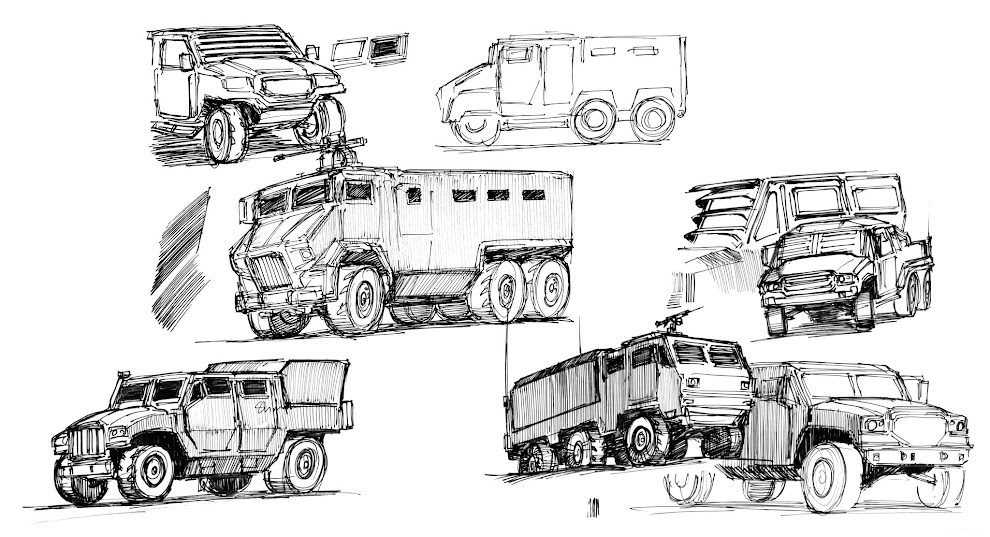
ShinHan’s offering was new to me. They are a brand from Korea and they also offer art markers with a full spectrum of colors that rival Copic. ShinHan’s fine liner range was pricier compared to some of the more easily available brands, but not in the range of Rotring Tikki. The chassis is a nice, shiny black but could get slippery in your hands. Despite the slightly higher cost, the pen didn’t feel much different from those in the modal price range. In fact I am going to say I was a little disappointed in the pen.
+Nice big labels, you won’t pick up the wrong size
+Classy feel to the pen chassis design
+ Nice, clean black ink when dry
+ Works well with markers
-Ink flow can be rather inconsistent
-Even when capped, the nib can sometimes dry out and have to be reactivated – this bugs me the most
- Ink takes a while to dry when layered on
- Pen nib loses contact with paper over areas with undried ink – this pen does it more than other brands
Uchida Marvy
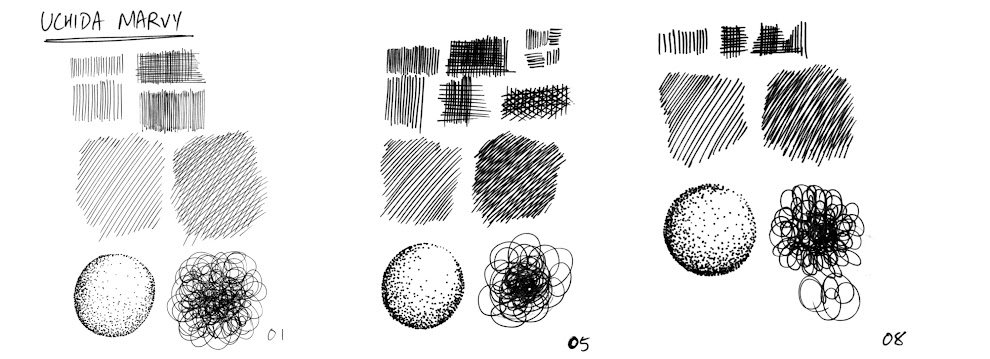
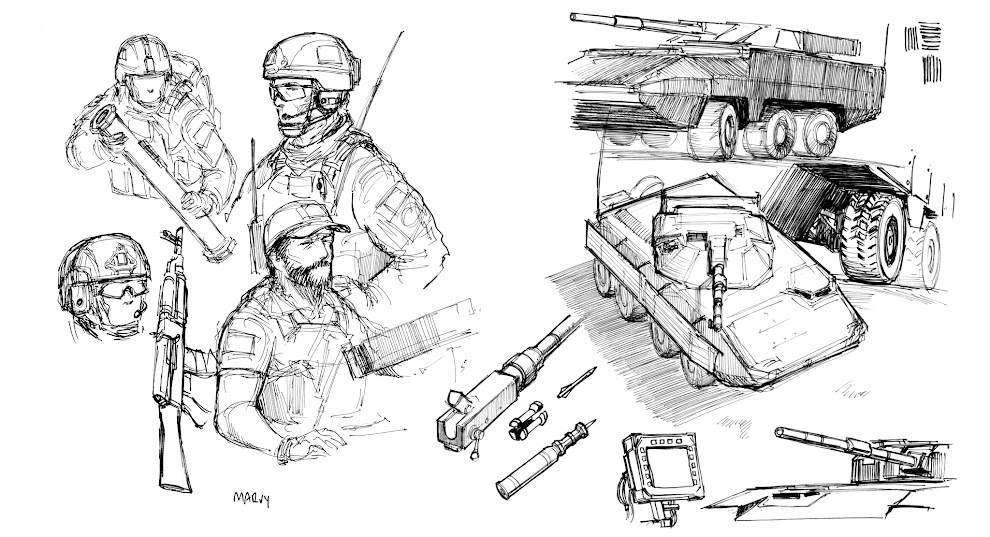
I’ve picked up Marvy’s and gave it a go before. There’s not much to write home about. It looks cheap, is cheap and performs as priced. The biggest reason why I gave it up was the ink not being rich enough. Under bright light it feels more translucent than opaque. Then again like most of the pens on this review, price dictates quality. Personally I don’t have many good things to say about it but if you’re in a pinch, it will work.
+ Price point, probably the lowest cost among the range of pens tested
+ Works well with markers
+/- Chassis is about 1mm thicker than most others, so if you like a thicker pen to grip on
+/- Feels light in the hand
- Ink feels translucent when dry
- Fiber inkwell wobbles in chassis
- performed the worst among all 12 for the curly line test, nib fouled up real quick with dislodged paper pulp
- Despite at least 4 other brands having a glossy grip surface, the Marvy feels the most slippery
Pilot DR

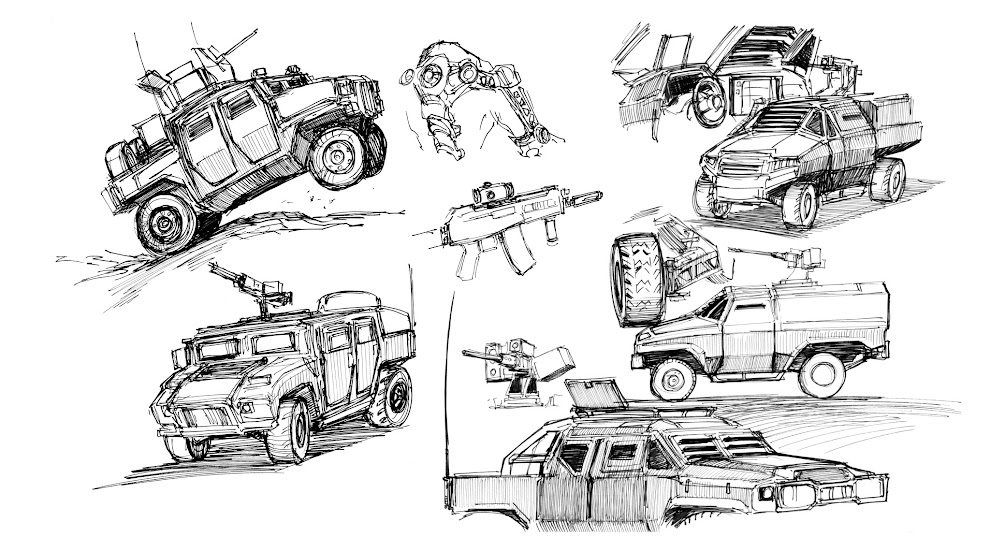
This was probably the first ever fine-liner pen series I’ve ever used way back in the early 90s. The price point is a bit lower possibly because its been around for a long time. The pen design hasn’t changed and the nibs still looks the same. The DR didn’t give me the best experience before, so I went into testing with some skepticism. Overall it performed better than I expected and held up well.
+ Good performance for price point
+ Ink flow is smooth on most paper types
+ Works well with markers
- No nib size indication on the pen chassis, they’re only found on the cap
- Ink looks translucent when dry
Staedler Pigment Liner used to be my go to brand when I was studying overseas. They feel nicer in the hand (my preference) compared to the Sakura Microns due to the textured surface (as opposed to the glossy surface on the Sakura). A big issue with Staedler pens is they tend to look more transparent when dry and that can be an annoyance to some artists. Generally the pen is pretty alright to use, but can cost a little more than average.
One interesting thing to note is, I’ve had a set of Pigment Liners stashed in my pen holder for nearly 10 years (the packaging is the same – yes I have a lot of pens) and I’ve taken them out to give them a go. The black ink has faded into a transparent brown. So don’t hang on to them for too long. They seem to last better on paper.
+ Good ink flow rate
+ Robust, durable nib
+ Supposed 18 hr cap-off period, longest duration any brand would guarantee
+ Works well with markers
+/- Textured chassis allows for steady grip, could be an annoyance to some users
- Ink looks translucent when dry
- Ink may fade over time
Despite having known about the Multiliner , I’ve not tried it out until now. Perhaps due to the negative experience I’ve had with the more costly Multiliner SP series. Main difference being the Multiliner version is fully plastic and disposable while the Multiliner SP has refill tubes, changeable nibs, tool sets, etc. What surprised me was how good the ink flows and how well it holds up to layering. I was also somewhat surprised by the cost. It’s very competitively priced and performs better than most brands within its price range.
+ Smooth flowing
+ Nice, clean black ink when dry
+ Works great on copier paper, doesn’t rip up the paper when layering
+ Works with Copic markers (of course)
+ Nib sizes start at 003 (smallest size among all brands tested)
- Glossy chassis finish makes it slippery
- Clip on pen cap feels flimsiest among all pens reviewed
Uni PIN

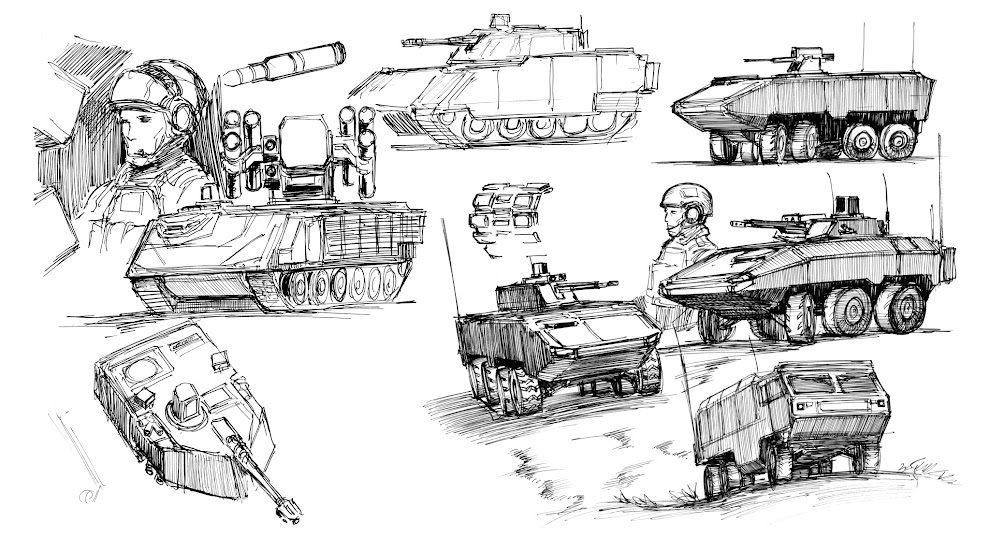
I reviewed this last because I don’t want my familiarity with this product to influence how I evaluate other pens. I’ve still not changed my mind after the test. This is by far the best performance for the money IMHO. Nibs wear well and generally are quite durable. Ink flow is smooth across most paper types I use for sketching.
Trivia: Uni PIN is produced by Mitsubishi Pencil Co (makers of UniBall pens) – which has zero relations with the larger Mitsubishi conglomerate.
+ Smooth flowing
+ Nice, clean black ink when dry
+ Works well with markers
+ Matte chassis surface helps a little bit with grip
+ Transparent window on pen cap helps with identifying right size
- Nib size indicator on pen chassis is quite small
Line Tests On Other Papers
Below: Bristol Smooth
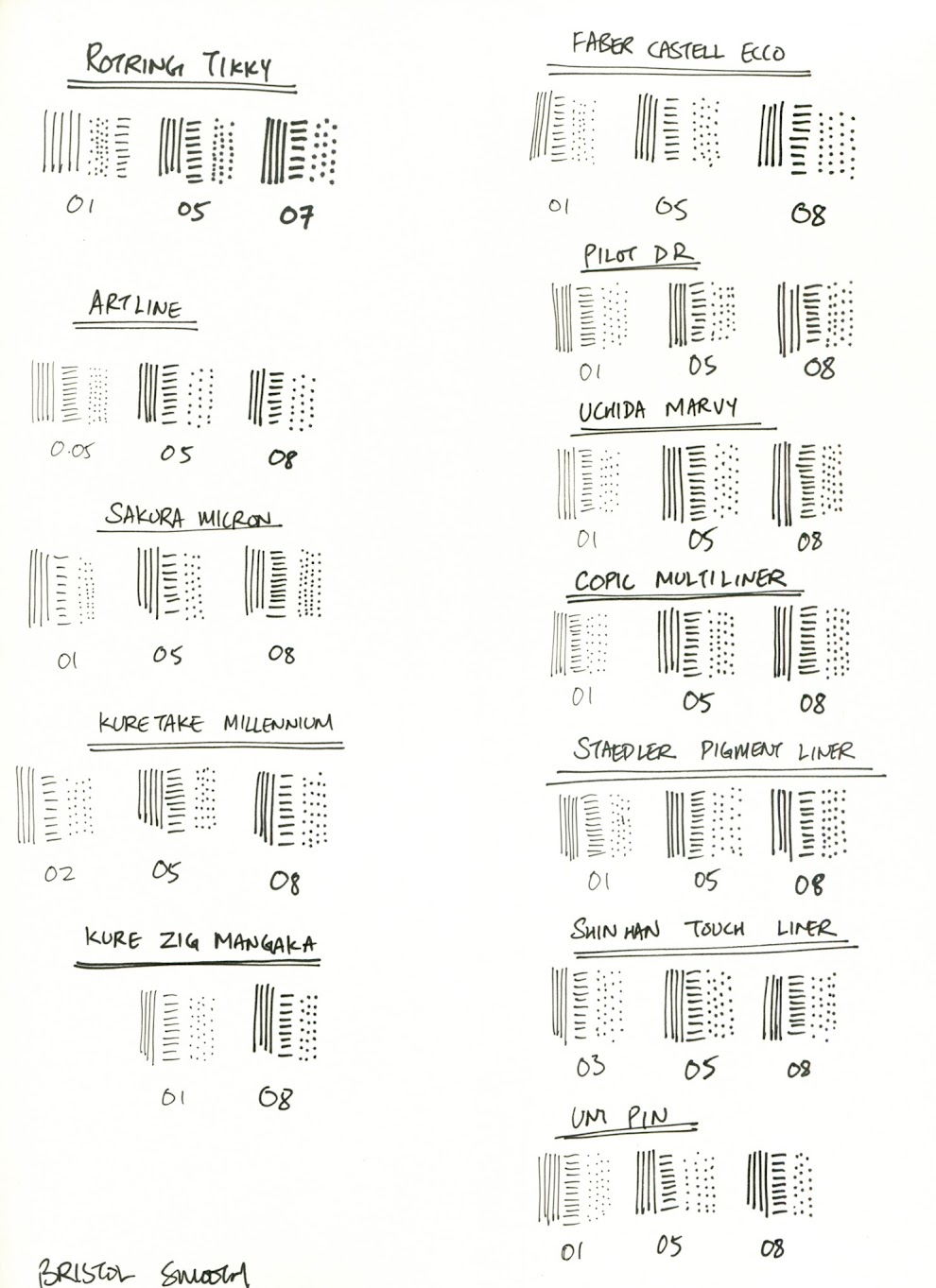
Below: Clairefontaine 224gsm

Below: Fabriano Tecnico
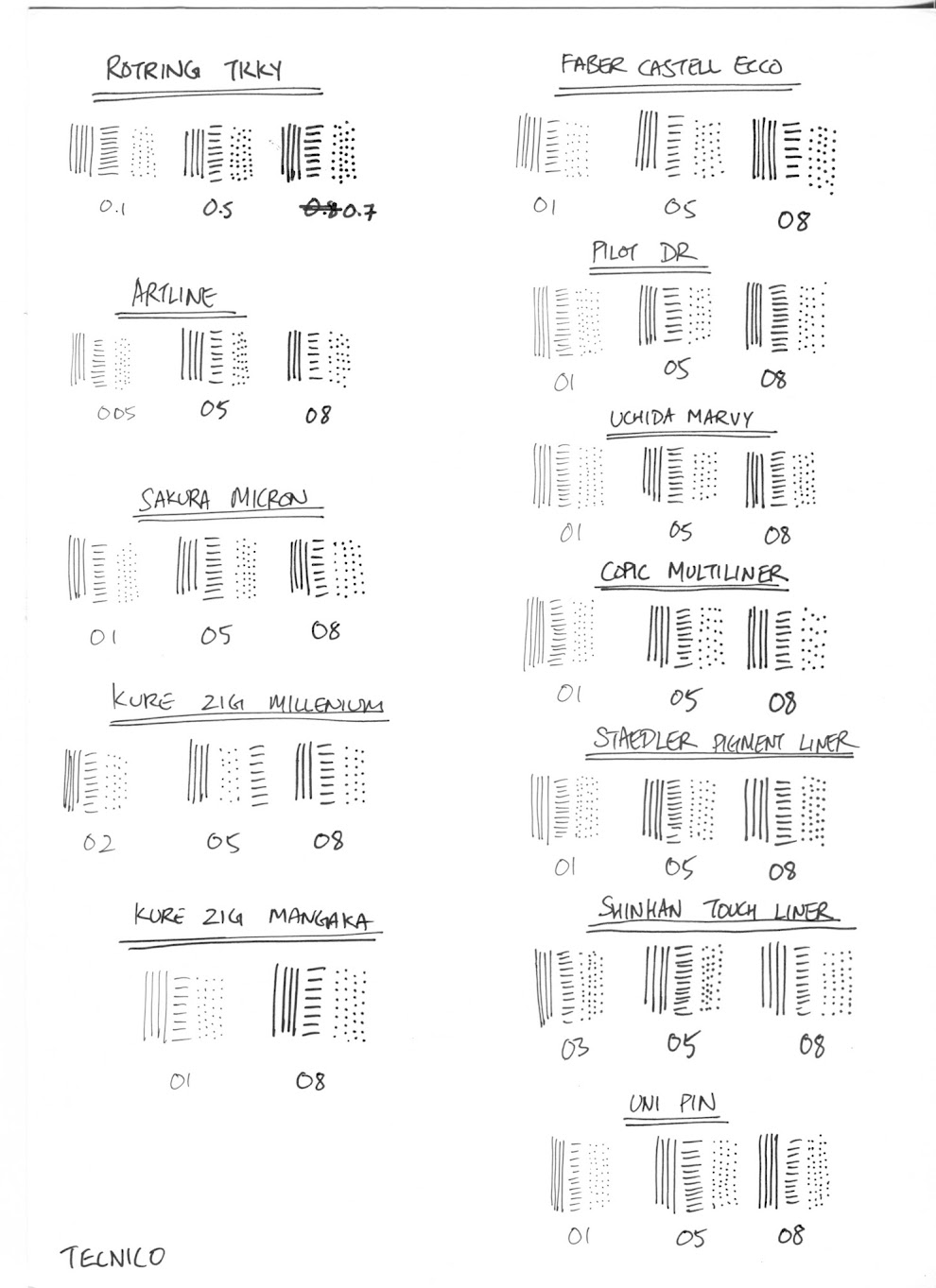
Below: Copier paper 100gsm
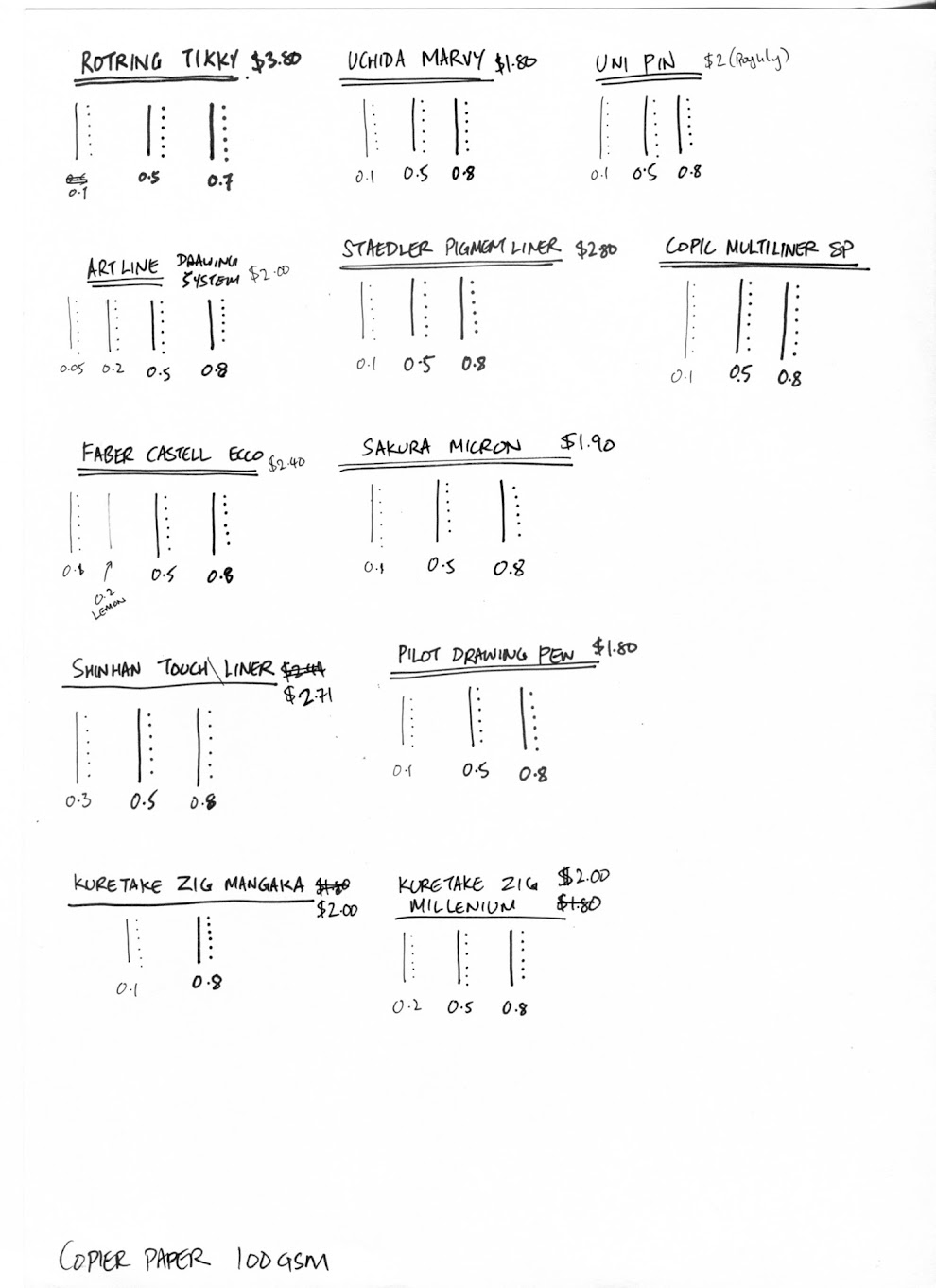
The pens were tested against other paper types to see how they performed. They did well on Fabriano’s Technico ink paper. They mostly didn’t fare so well on Bristol as it bleeds too much. The pens did ok on Clairefontaine’s 224gsm Drawing Paper, but the graininess destroys pen nibs real quick.
Pens NOT Reviewed
There are of course, other pens that didn’t find their way into the review. Here are a few types that I didn’t get to find in Singapore, or haven’t had the chance to come across them.
- Copic Multiliner SP
- Deleter Neopiko Line2
- Koh I Noor Fine-liner
- Letraset Fine Line Pen
- Stabilo Sensor
- Sharpie Liner
I do have a single Copic Multiliner SP – which, if I’m honest, isn’t spectacular for its price. The pens reviewed were pretty much are on par, if not, straight up outperforms the Multiliner SP. To me, it simply isn’t worth the price. It sure looks great in that aluminium chassis though.
I’ve also recently discovered my fiancé has a set of Deleter Neopiko just as I was wrapping up this review. If time permits and if Parka doesn’t feel its too much work, I’ll update that review here at a later date.
CONCLUSION
Most of the Fine-liner pens tested worked great and held up well to normal writing and sketching. For the best mileage, the choice of paper should be smooth instead of a grainy, textured surface. The majority of the pens were priced very competitively and performed rather similarly. One can expect to pay between SG$2.20 to SG$2.60 for most brands depending on where you buy them.
The brands that I’ve used before stood up well and performed as expected. Some of the shortcomings I’ve experienced with them still persist over the years. A lot of it is down to the preference of the individual so it may be the reason why these companies don’t often address the issues I’ve had.
Pens That Surprised
Both Copic multi-liner and Rotring Tikky surprised me. I’ve not used either before and they performed quite well. The Copic pens did better than some brands in the same price range. With the exception of a wobbly pen clip which is a fairly cosmetic issue, I had a great time drawing with the pen. I might switch over to Copics if I ever have difficulty finding the Uni Pin.
Rotring Tikky pens flowed generously and were amazing to draw with. The fast flow of ink unfortunately means you might have to go one size smaller each time. A 01 sized nib might look like a 02 or 03 compared to the other brands. Still it worked really well and there weren’t many hang ups. The price though can be a big issue if you’re not looking to splash nearly SG$4 for a disposable pen.
Pens That Disappointed
For me, Shinhan Touch Liner and Uchida Marvy were probably the poorest performers. Shinhan’s offering wasn’t particularly impressive despite being slightly more costly than the average price range. The cap didn’t feel very tight and the nib sometimes dried up even with the pen capped. Performance across the different varieties of paper weren’t terribly remarkable either. Some of their other product lines performed well so I was fairly disappointed with their fine-liner offering.
Uchida Marvy was a familiar brand that I’ve used and rejected. Ink quality was poor, pen didn’t feel robust in the hand. Despite the low cost, it just can’t match up to the consistency of the lines the slightly more expensive pens provide.
I could be accused of not favouring pens with glossy chassis surfaces because both the Shinhan and Uchida Marvy had glossy pen chassis and were slippery after prolonged use. However the Rotring Tikky, Kuretakes, Sakura Micro and Copic Multi-liner all had glossy grip surfaces too and they gave the complete opposite experience.
No Change in Favourites
At the end of testing, my favourites remain unchanged. Because I run through these pens quite quickly, cost, I need to strike a balance between cost and quality. Uni Pin does that for me. Over the period of testing, the brand either clearly outperforms most of the others in terms of feel and ink quality, or it performs very close to a more expensive brand. My other go to brand is Sakura Microns. One of the big reasons was down to the Microns holding a consistent width when gliding it over paper.
Final Thoughts
In my opinion, they’re all very usable and pleasant to write and draw with. As mentioned, my review is based on my own biases, aesthetic sensibilities, drawing style and other requirements. A lot of these small little things are nitpicks and may not matter to most artists. If cost is an issue over quality, Marvy has you covered. If quality and flow of inks are important and cost is no problem, Rotring’s Tikky works really well. Any of the median priced brands like Uni Pin, Staedler and Sakura Microns will see you through most of the inking tasks.
The right kinds of paper should be used however. The fiber nibs on fine-liner pens, in my experience, don’t generally stand up to a lot of abuse. If its constantly being dragged back and forth over a grainy drawing surface, you could destroy a 0.05 nib well before you deplete the ink. Smooth, Bristol boards, paper for ink, Xerox or copier paper seems to work best.
Finally, I want to express my thanks and apologies to Parkablogs. I want to thank Parka for giving me this opportunity to review the pens in more detail. We would often use something, find it not suited to our liking and say “it sucks”. But this review really made me sit down and take note of what I liked and didn’t like with each brand before making a comment. And I would like to apologize because I thought this was gonna be a piece of cake and ship out this article on 31st Jan 2015. But here it is now after 7 long months. Once again, thanks Parkablogs for the opportunity.
JT signing off. Sketch on.
Availability
You should be able to find many of the fineliners mentioned at Amazon.com, Jackson's Art (UK) and Dick Blick Art Materials (US).
Comments
Just discovered parkablogs
Just discovered parkablogs.com and found this very thorough review to be well-written and comprehensive. I know it took a lot of time and effort and I appreciate JT and Parkablogs for sharing their knowledge and experience.
Fantastic review and overview
Fantastic review and overview of whats out there. Loved seeing the consistency of all your drawings with the different pens. Your effort is much appreciated!
Maybee i overlooked it.
Maybee i overlooked it.
for me a very important topic is refillability.
hate to throw dozens of pens away.
u have info on that?
@kunstbanause
In reply to Maybee i overlooked it. by kunstbanause (not verified)
@kunstbanause
Most of these fineliners are the use-and-throw type. If you want refillable ones, try the Rotring technical pens. See this review https://www.parkablogs.com/content/rotring-isograph-vs-rapidograph
thanks a ton for review ..
thanks a ton for review .. try to add Brustro Technical Pen in the text. thanks again for the overview really helpful specially when buying online
Thanks for the great
Thanks for the great comparison.
The whole reason I am looking at different pens is that there seems to be a pretty serious decline in quality of the Microns lately - the last batch I got leaked, and the last few batches seem to dry up faster. This is a pity, since they've been my go-to sketching pens for at least three decades...
I haven't seen the Unis in stores here in the US (they can be had on line, of course), but the Copics are pretty common, so I'll try those next (I too was disappointed with the Copic SP - it seemed like such a good idea to have something between a disposable and a real tech pen, but it ended up being the worst of both, instead of the best of both).
Hi
Hi
I found the Sakura Microns bled quite a lot - you have to use extremely light unstopping strokes. A fraction of a moment lingering leads to a noticeable bleed.
I’m after the thinnest available alcohol based fineliner or something like Sakura Pigma Micron but smaller, one that doesn’t bleed and is definitely alcohol based. Any ideas?
@Melinda Brooks
In reply to Hi by Melinda Brooks (not verified)
@Melinda Brooks
Most of these felt tip pens are going to bleed.
You may want to consider the Rotring Isograph
whatever happened to the
whatever happened to the ITOYA Fineliners? Does anyone know? Discontinued obviously, but why, who do i talk to to get them to come back. lol.
Looking for a replacement to
Looking for a replacement to the Sharpie Extra Fine - plastic nib. Can anyone recommend an alternative, I can not use the felt/fiber tips that were reviewed here
Thanks!
Hi Teoh
Hi Teoh
I love your blog and art reviews.
I see in your artwork you use the white gelly roll pens quite a lot. Can you please comment on them. I brought a few and they don't really work very well, the ink appears dried out and for the finer nib pens, I struggle to get any ink out of them. Its a brand new pen!
I have since tested a few in the shops and they also appear to be the same.
I've also tried the uniball signo white pens. Those are great! But after a while becomes streaky and hard to get the white ink to consistently apply to paper.
Is there something in the white ink that makes it so difficult to get a good white pen?
Thanks
The gelly roll pens I got
In reply to @Tina by Teoh Yi Chie
The gelly roll pens I got doesn't even have ink coming out on dry paper. I thought it was probably a bad batch so I went to two other different stores and tried some they had in the pen section and there was barely any ink coming out, some didn't have any ink coming outt. I kept wondering why this brand was so popular given the unreliability.
Very informative as my Micron
Very informative as my Micron Pigma are starting to run low on ink was trying to figure out what to try next. I referenced your blog post as well this one (https://blog.penvibe.com/fineliner-pens-good-use-copics-alcohol-markers/) which considers whether the pen smudges or feathers with alcohol markers. That post considered some not on your list but focused on whether or not the markers smudge or feather. However they didn't consider differences between bristol or mixed media paper and they also used inconsistent pen tip sizes. They did have a nice table comparing a couple properties. I do have to admit my Micron Pigmas do smudge when coloring over with copic. I would really love to see a table that brings it all together (since you have the pens and if you have the time, also your thoughts on Ohto):
1. Smudge resistance water and alcohol
2. Feather resistance water and alcohol
3. Non-Blotting beginning, middle and end of a stroke
4. Non-Thinning beginning, middle and end of a stroke - is it thin at the beginning (not a morning person) or does it start dying out after a short while.
5. Line width consistency - does it keep a consistent flow of ink through long lines or large works
6. Smoothness - does it glide well, or hang up
7. Opacity - can it write over other media (watercolor, marker, etc)
8. Cost
It would be great if there were a table that rated these pens on these characteristics to get a full picture.
Copic multiliners come in the
In reply to @kunstbanause by Teoh Yi Chie
Copic multiliners come in the SP variety which are refillable AND you can replace the nibs too.
@Riley
In reply to Copic multiliners come in the by Riley (not verified)
@Riley
Yeah, but the disposable Copic pens are cheaper than the refillable ones. Even though the refillable ones are good for the environment, more will just get the disposable ones to save money.
I feel like the "refillable"
In reply to @Riley by Teoh Yi Chie
I feel like the "refillable" Copic pens are a bit of a marketing ploy. They seem like they would be better for the environment, but you don't refill the ink chamber, you replace it. The cylinder of plastic you throw away is the size of a pen body, so it really doesn't seem much more environmentally friendly. The only time it seems like you're throwing less away, is when you replace just the nib. I suppose if someone went through a lot more nibs than ink it might be a better option for the environment... but that hypothetical person seems unlikely.
Perhaps the plastic on the ink cartridge is a lot thinner than a plastic marker body. I haven't held one, so I can't speak to that.
@Hannah
In reply to I feel like the "refillable" by Hannah (not verified)
@Hannah
True. But since the refillable Copic pen can be opened up easily, you can also refill it with your own ink with a blunt syringe. I would probably use Sailor KiwaGuro or Rotring ink to refill.
Price of the Copic refill isn't too different from a disposable pen with brand new nib.
Refilling with your own ink or getting a disposable pen are two options better than buying a Copic refill.
This is the best comparison I
This is the best comparison I found (yes, compared to all the parts of the web I can see through search engines), so I’m linking to it now on my best-thing-today article. The only pen I miss here is the Faber-Castell PITT (because that’s the one I decided to use in the end, along with a Sakura 005 for the extremely fine details).
Thank you!
I used a Rotring in school
In reply to @kunstbanause by Teoh Yi Chie
I used a Rotring in school some 20 years ago (when my math schoolbook got wet so I had to buy it). It held up to writing a full years homework into the margins :-)

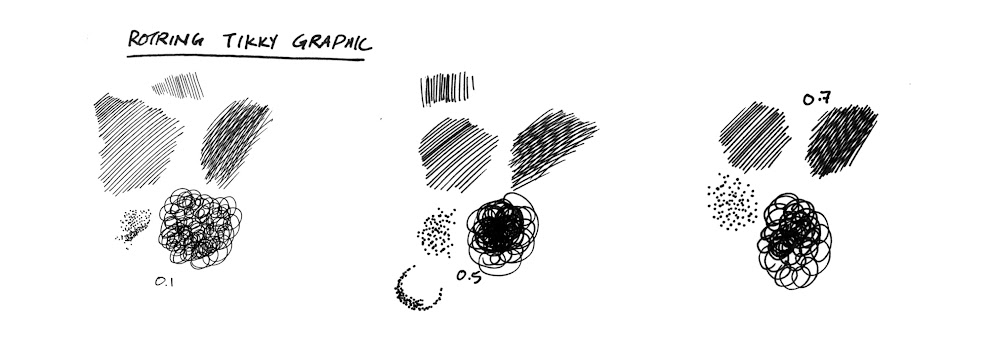
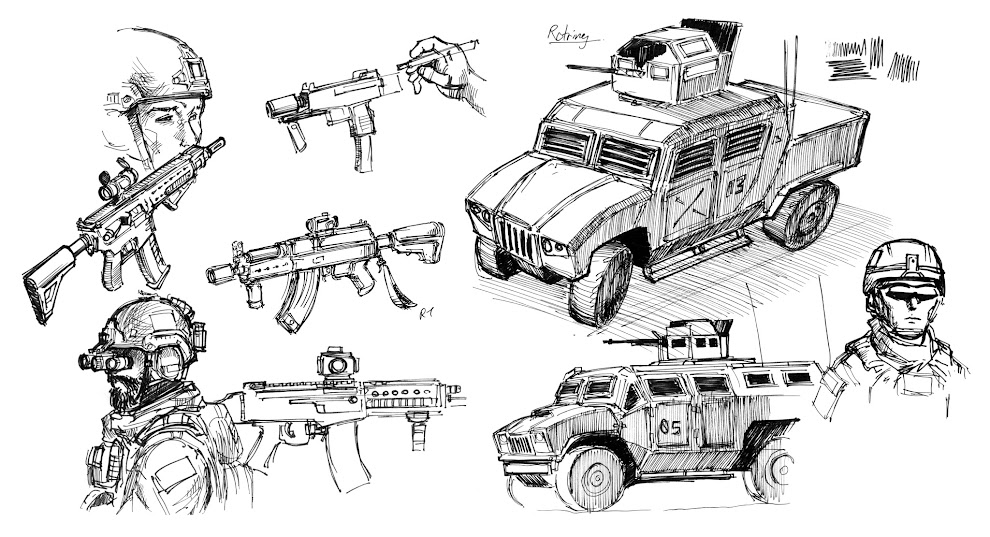
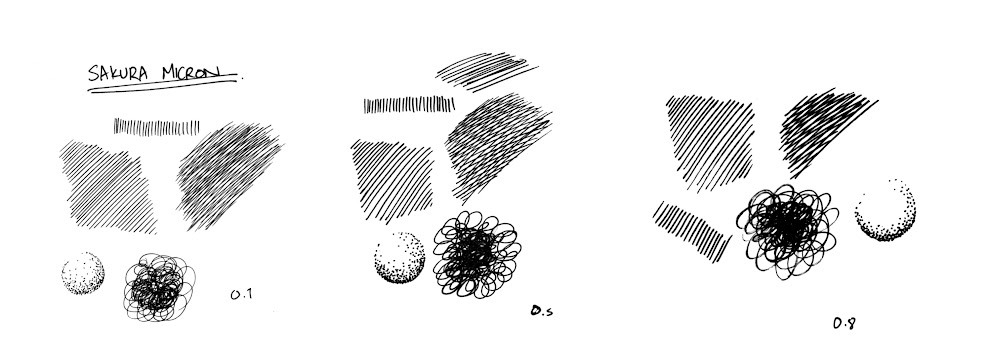


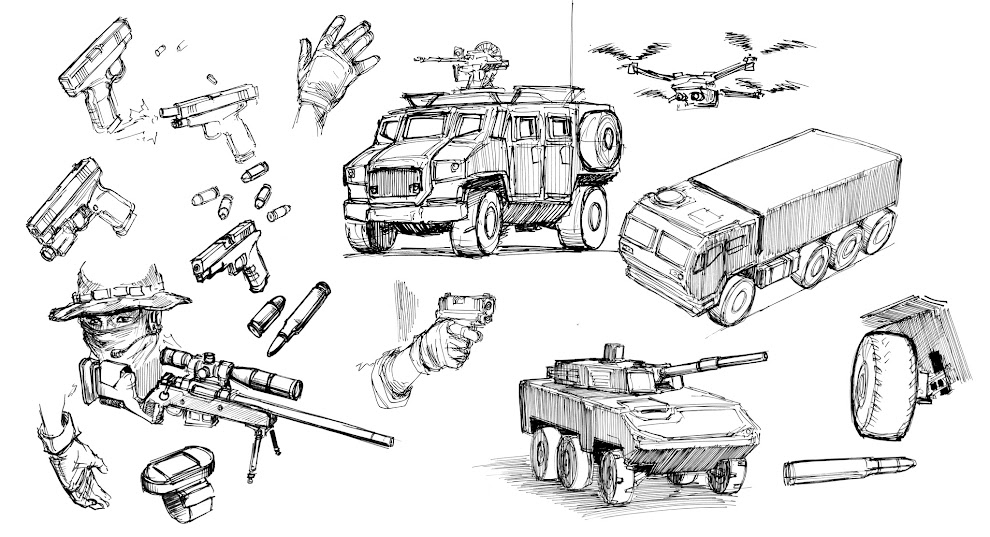
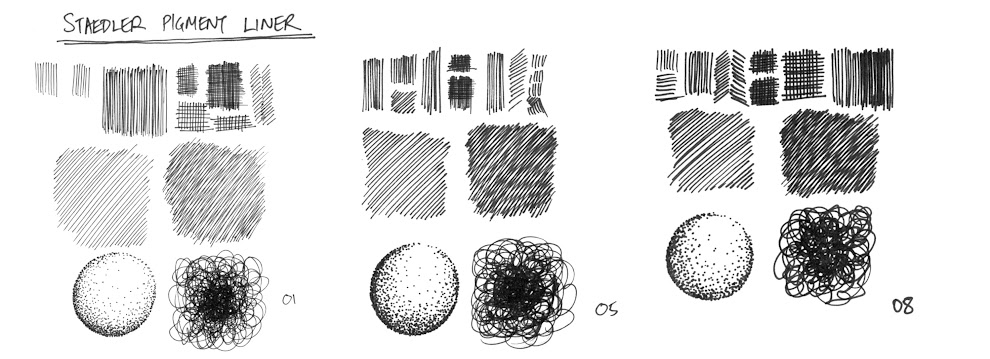
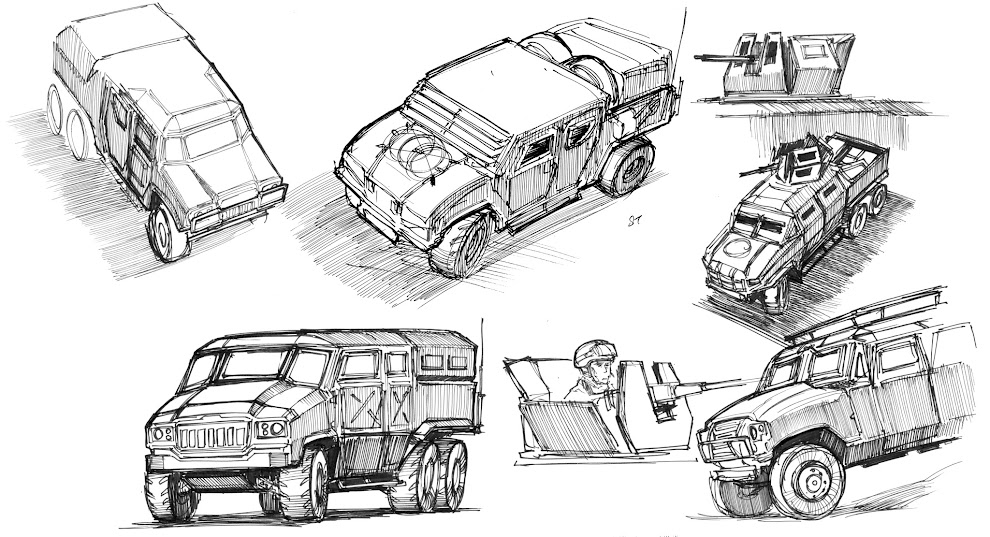
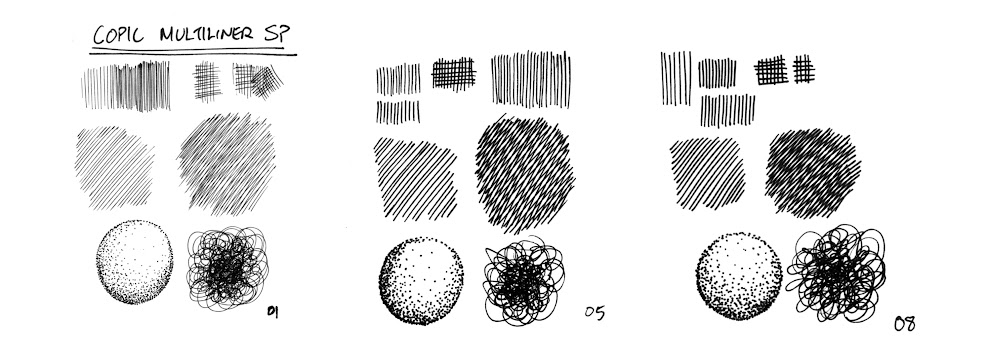
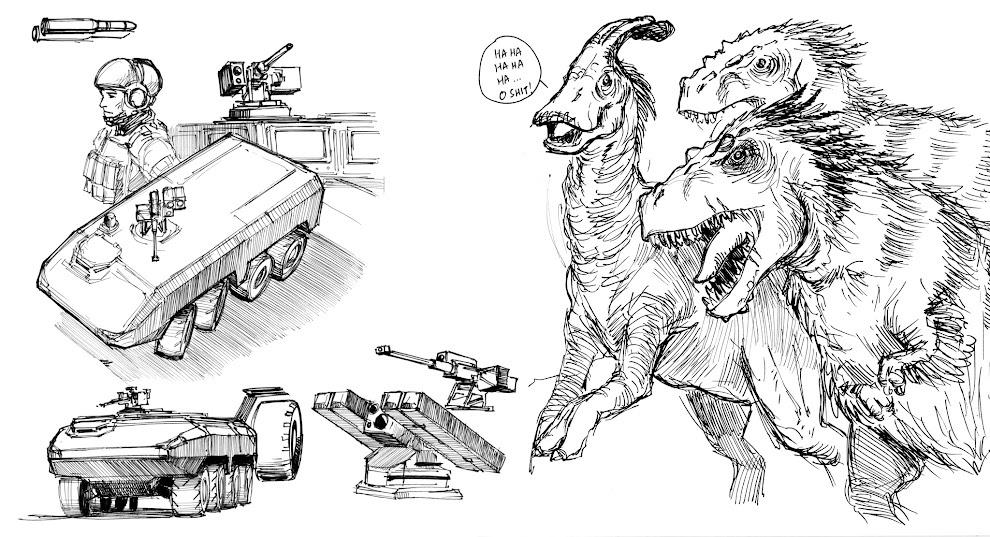
Add new comment